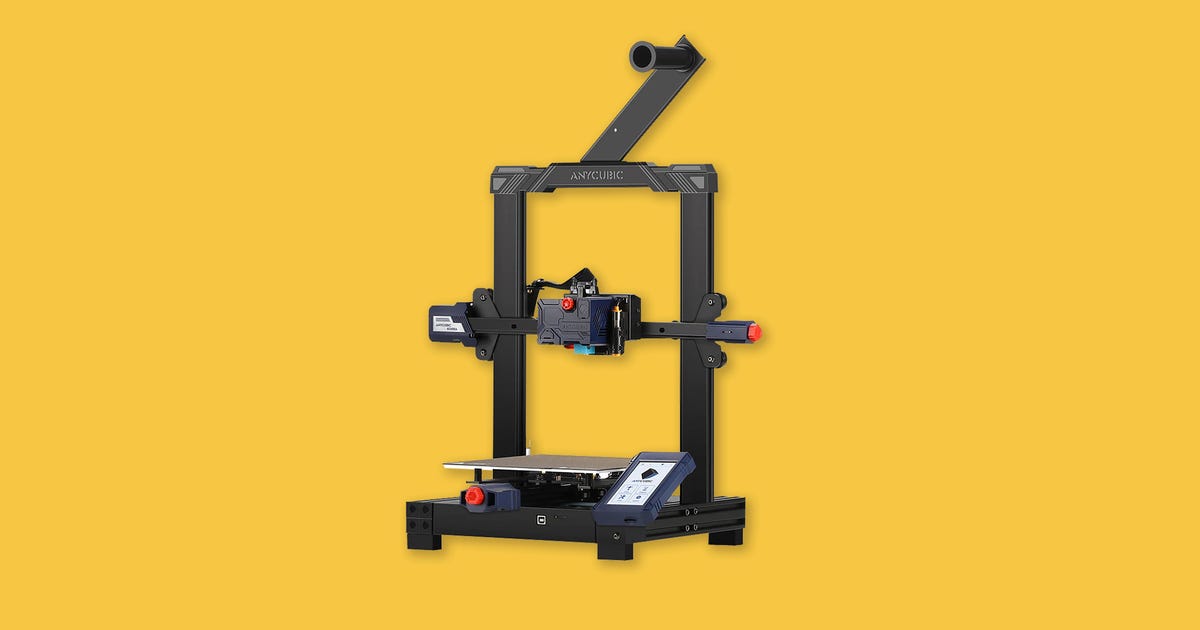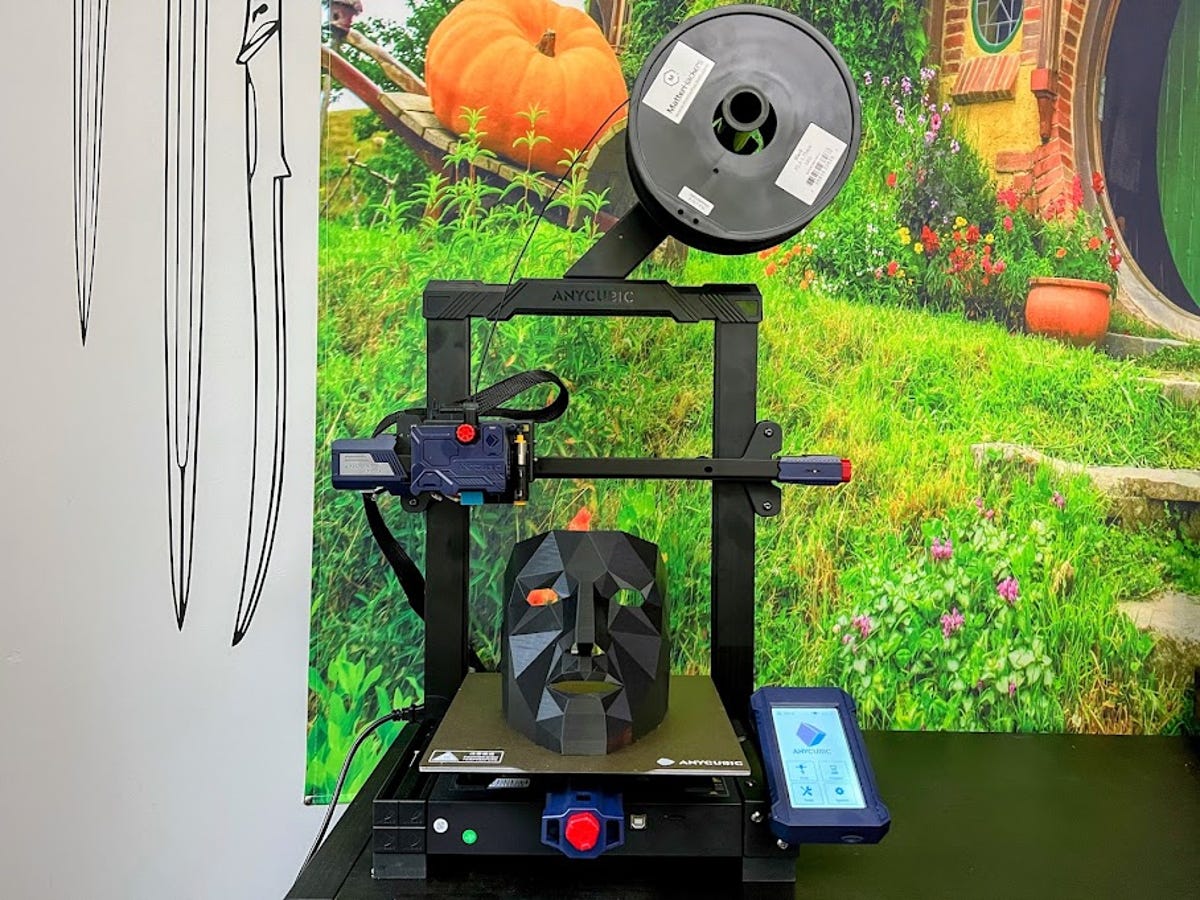
Anycubic Kobra Review: The Everybody 3D Printer
My love for 3D sflowing and my desire to maintain a 3D printer are today at odds with one another. If I spend more time diagnosing why a trace failed or what I need to achieve optimal printer performance than I exhaust creating things to put in the printer, I'm not fervent. So despite my having been a 3D printer owner and fan genuine around 2015, my time spent actually printing things is fairly low. When Anycubic announced the Kobra as a starter printer and generally smaller companionship to the Kobra Max (reviewed by my colleague James Bricknell), I was curious to see how far less expensive machines had come in the last seven years.
Perhaps unsurprisingly, I found my biggest issues in 3D printers of yore had evaporated with this new model.
Short of shipping it fully reached, the Kobra couldn't be much easier to put together by yourself. The step-by-step instructions in the box have you well on your way inside of 20 minutes, leaving you plenty of time to fire up the machine and behindhand the prompts on its touch display.
In theory all you need to do once assembly and setup is a quick one-time bed leveling, heat test and the initial filament insertion before attempting the aboard test print to ensure everything is OK. Reality did not line up with this theory, as my test print failed twice without any positive indicator as to why.

The Anycubic Kobra, fully assembled.
Russell Holly
After a little poking near online, I found the culprit: The instructions Anycubic provides for initial configuration ask you to touch the print head to a sheet of paper pending it doesn't glide smoothly. These instructions are not for a base sheet of paper you'd get at Staples, so my heed head was slightly too high and causing problems. A slight tweak lowered the print head to the correct station and immediately yielded a little plastic owl (the base test print for Anycubic machines).
With the standard done, it was time to fire up the Cura interface and crop a file for this printer. Anycubic included Cura on the microSD card in the box as well as a USB reader for it, manager it easy to push files from my laptop to the printer exclusive of needing to directly connect. Unfortunately, the provided version of Cura did not come with commands for this Anycubic printer; I had to follow a different set of commands for manually building this. Later in my review words, Anycubic provided a config file for Prusa Slicer, which also worked stout for prepping files for printing. Whichever software you use, once ready you pop the microUSB card into the the printer's guide, tap the file you want and you're good to go.
My frustration with the software and general lack of benefit at this stage is immediately balanced by how stout this printer is when it works. Once I was able to get benefit from Anycubic, things were great. But if you're repositioning to market this as a printer for beginners, there arranges to be some consideration for the beginner experience beyond the printer's assembly and maintenance. Anycubic is far from alone in this, as most 3D printers are put on shelves for land to figure out on their own. While that is good enough for many already in this station, it's not the best path if your goal is to grow consumer excitement for 3D printers in general.

A look at the CNET test file, which helps us resolve the performance of any 3D printer.
Russell Holly
Once the software is actually set up and moving, the Kobra is spectacularly consistent in the quality of its prints. More than 100 hours of active printing in the last week has shown I can set a heed and walk away confident that I will return to a nice, used print a few hours later.
In all of my declares, the only real issue I found was with the prints' output temperature. Because the cooling fan at the extruder isn't quite much enough, the extruded filament doesn't cool as fast as it probably should, which leads to issues with thin or narrow regions of a print. It's a small thing you can work near in a lot of cases with some small goes to the default output temperature of the extruder, but if your goal is to heed something delicate or extra thin you may encounter some inconsistency at the edges.
Once a heed is complete and the build plate underneath has cooled, you can grab the build plate's spring steel surface and give it a quick-witted bend: The entire thing comes off and flexes plainly, so you can pop anything off of it with ease. Having used many hours with glues and sprays on 3D printers from older generations, having a simple flexible plate I can rely on and plainly clean is fantastic.
For $300, the Anycubic Kobra is the best starter 3D printer I have used in a long time. It's plainly $100 better than any of the bargain $200 printers you'll find anywhere, both in overall print quality and how fast it completes simple tasks like heating up to the apt temperatures. And if Anycubic puts just a little more energy into supporting its users above the software side of things, instead of leaving it all up to the 3D printer people, this little printer could help get a lot of new land into this hobby.
Blog Archive
-
▼
2022
(59)
-
▼
August
(6)
- 'Doctor Strange and the Multiverse of Madness' Rev...
- 2022 Nissan Rogue Review: Little Engine Makes a Bi...
- MacBook Pro M2 13-Inch Review: Familiar Design, Ne...
- 'Top Gun: Maverick' Review: Smash Hit Tom Cruise S...
- Anycubic Kobra Review: The Everybody 3D Printer
- MLB TV Review: Subscribers May Balk at Increased B...
-
▼
August
(6)
Labels
Total Pageviews
Search This Blog
Popular Posts
-
'Doctor irregular and the Multiverse of Madness' Review: Marvel Magic Casts a Horror Spell After more than a decade and dozens...
-
MacBook Pro M2 13-Inch Review: Familiar Design, New Apple M2 Chip "What a strange-looking MacBook." That was my first-rate t...
-
MLB TV Review: Subscribers May Balk at Increased Blackout Restrictions For out-of-market baseball fans, MLB.TV is the only game in town...
